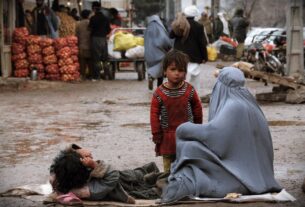Sun 17 July 2022:
The total price is staggering. Analysts estimate that $400 billion of debt is at risk using 1,000 basis point bond spreads as a pain threshold. Argentina has by far the biggest, with over $150 billion, followed by Ecuador and Egypt, each with between $40 and $45 billion. Crisis veterans believe that many can yet avoid default, particularly if global markets stabilise and the IMF steps in to offer assistance, but these are the countries that remain vulnerable.
The Argentine government won’t have to pay off any sizable debt until 2024, but after that, the burden will increase, and worries have begun to grow that strong vice president Cristina Fernandez de Kirchner may try to force Argentina to break its commitment to the International Monetary Fund. The deadline for Ukraine’s $1.2 billion in bond payments is in September. Kyiv may be able to make payments thanks to reserves and aid money. However, investors believe the government will follow suit in light of state-run Naftogaz’s request for a two-year debt freeze this week.
Due to President Kais Saied’s efforts to solidify his hold on power and the nation’s strong, obstinate labour union, there are worries that securing, or at least adhering to, an IMF programme may be challenging in Tunisia. It has a budget deficit of almost 10% and one of the highest public sector wage bills in the world. Furious borrowing has led to a rise in Ghana’s debt to GDP ratio to almost 85%. It already spent more than half of the tax receipts on debt interest payments, and its currency, the cedi, has lost about a quarter of its value this year. Additionally, inflation is going very close to 30%.
With a debt-to-GDP ratio of about 95%, Egypt has experienced one of the largest outflows of foreign funds this year, JPMorgan estimates, totalling $11 billion. Kenya pays interest on a little more than 30% of its income. Since it now lacks access to financing markets and has bonds worth over half a billion dollars that mature in 2024, this situation is problematic.
Ethiopia will be among the first countries to benefit from debt relief under the G20 Common Framework initiative. Although the protracted civil war in the nation has slowed development, it is still making interest payments on its only $1 billion international bond.
SOURCE: INDEPENDENT PRESS AND NEWS AGENCIES
___________________________________________________________________________________________________________________________________________
FOLLOW INDEPENDENT PRESS:
TWITTER (CLICK HERE)
https://twitter.com/IpIndependent
FACEBOOK (CLICK HERE)
https://web.facebook.com/ipindependent
Think your friends would be interested? Share this story!





